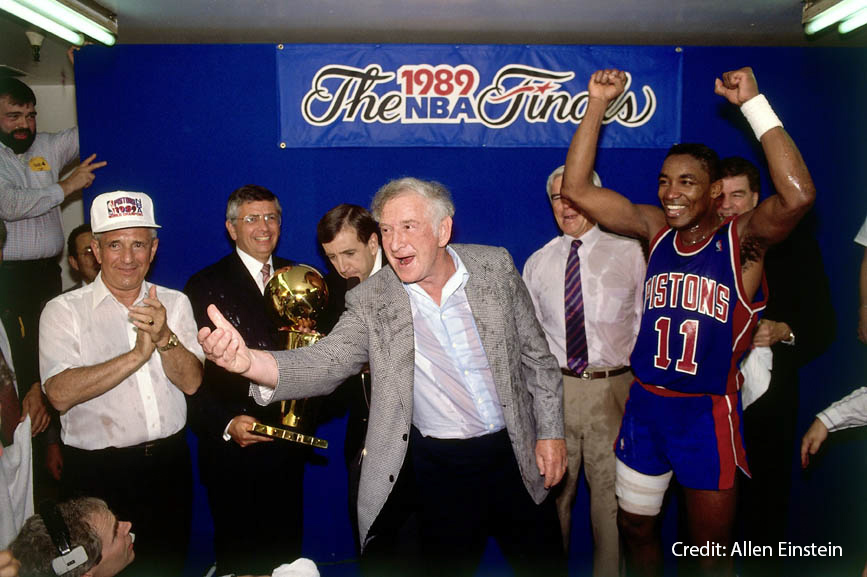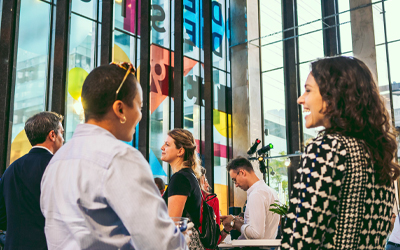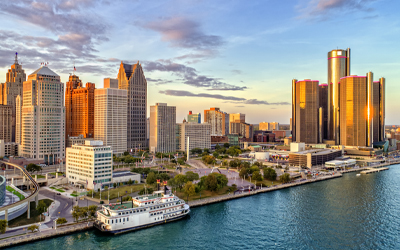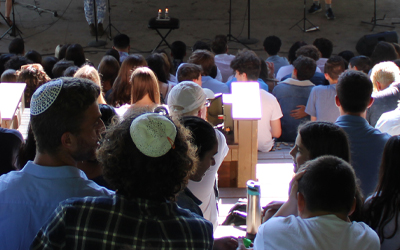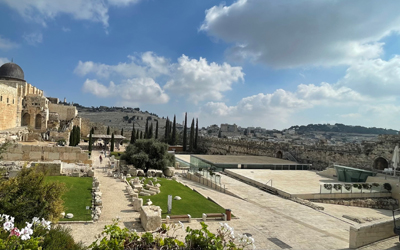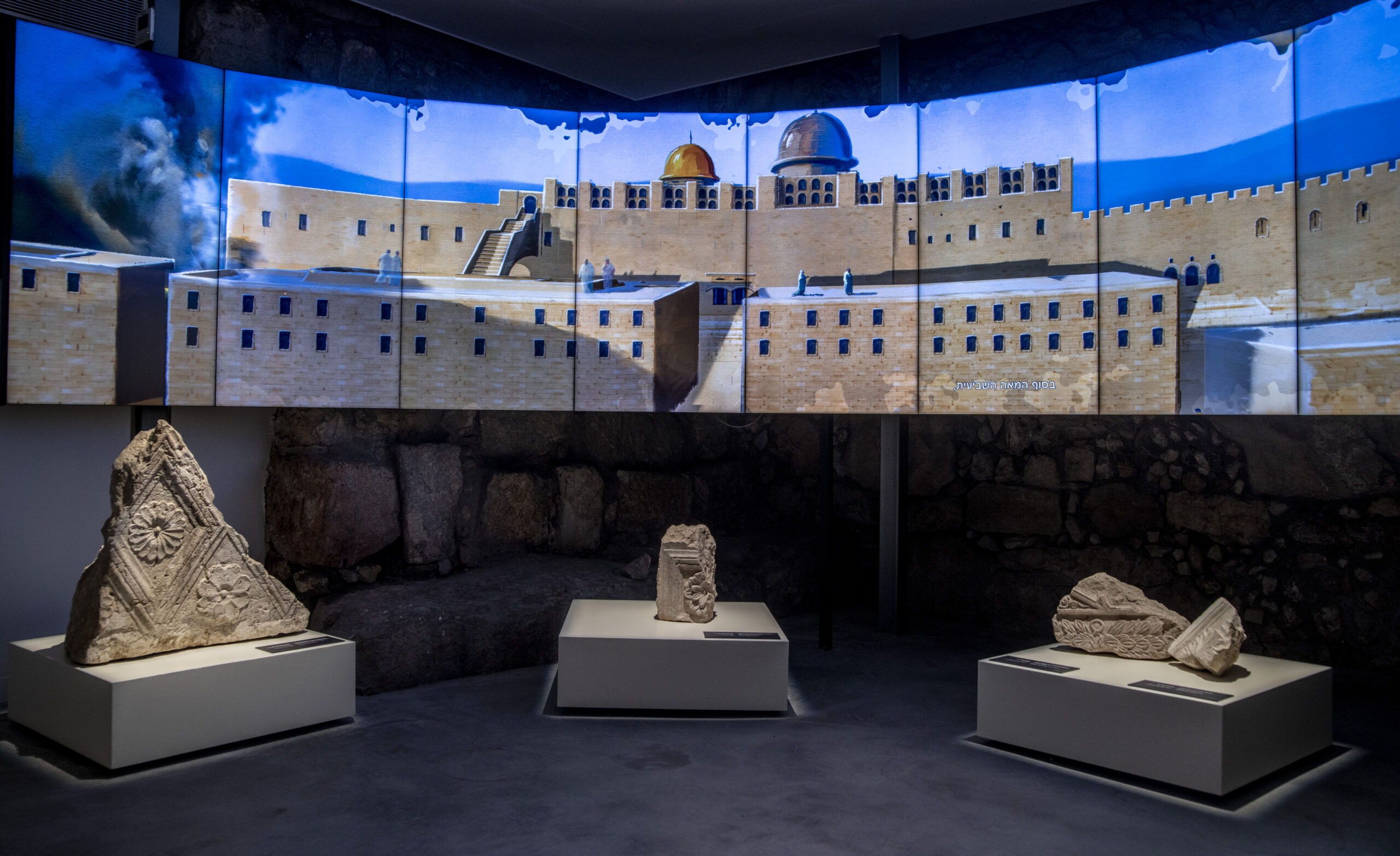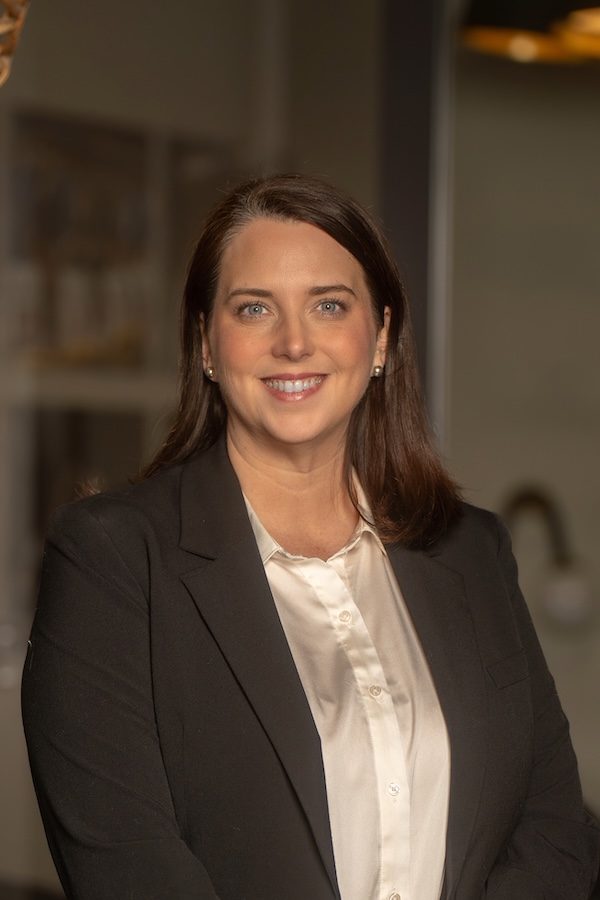New renovation of the Davidson Center in Jerusalem utilizes interactive tech and augmented reality to highlight history and archaeology of Temple-era Jerusalem
An ancient coin bearing the oldest-known depiction of the Temple menorah will go on display to the public for the first time on Monday with the opening of the recently renovated Davidson Center in Jerusalem’s Old City.
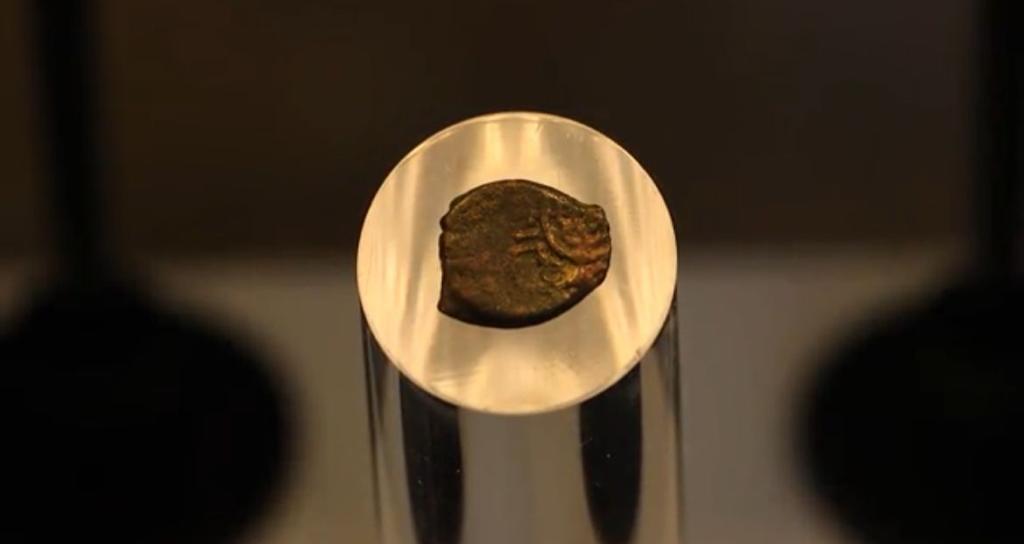
An ancient coin from around 40 BCE with the oldest known depiction of a Temple Menorah will be displayed at the newly renovated Davidson Center in Jerusalem, which will open to the public on March 13, 2023. (courtesy Emil Algam/Israel Antiquities Authority)
The coin dates to around 40 BCE, during the Roman times and the reign of the last Hasmonean king. “This is the oldest known artistic depiction of the menorah, created 107 years before the destruction of the Second Temple,” says Dr. Yuval Baruch, head of archaeology and administration at the Israel Antiquities Authority, who was one of the excavators of the site and led the archaeological curation of the Davidson Center. The coin was donated to Israel sometime during the 1940s, during the British Mandate period, and it’s unclear where or when it was found.
It’s part of an exhibit of rare artifacts that contain some of the earliest known references and research about the origin of the Temple menorah, a seven-branched candelabra that is also used as the symbol of the modern State of Israel. Next to the coin is the Magdela Stone , which was discovered in the town of Migdal in 2009 and was likely a Torah reading table from a first-century synagogue. The intricately carved stone shows multiple menorahs as well as a possible depiction of the Jerusalem Temple.
Also being displayed to the public for the first time is a piece of plaster from Jason’s Tomb, a carved-rock tomb from the Second Temple period nestled into the leafy Rehavia neighborhood in Jerusalem. There are five menorahs carved into the plaster, which was discovered in the 1950s during the excavation of the tomb prior to building an apartment building.
The three pieces were chosen as the centerpiece of the newly opened Davidson Center, which will open to the public on Monday after a three-year closure due to renovations. The multi-million dollar overhaul doubled the size of the museum and visitor’s center, which is located in the Jerusalem Archaeological Park in the Old City.
The new visitor’s center will combine archaeological finds with interactive technology to help visitors experience what life was like during the First and Second Temple Periods.
“Over the ages, people have found different ways to tell stories, which is a wonderful thing for human condition,” said Darin McKeever, the president and CEO of the Davidson Foundation, which funds the Davidson Center. “This story comes back to the original artifacts and original stones, so we can tell the history using archaeological finds, and use the technology to add to people’s understanding of the story behind them.”
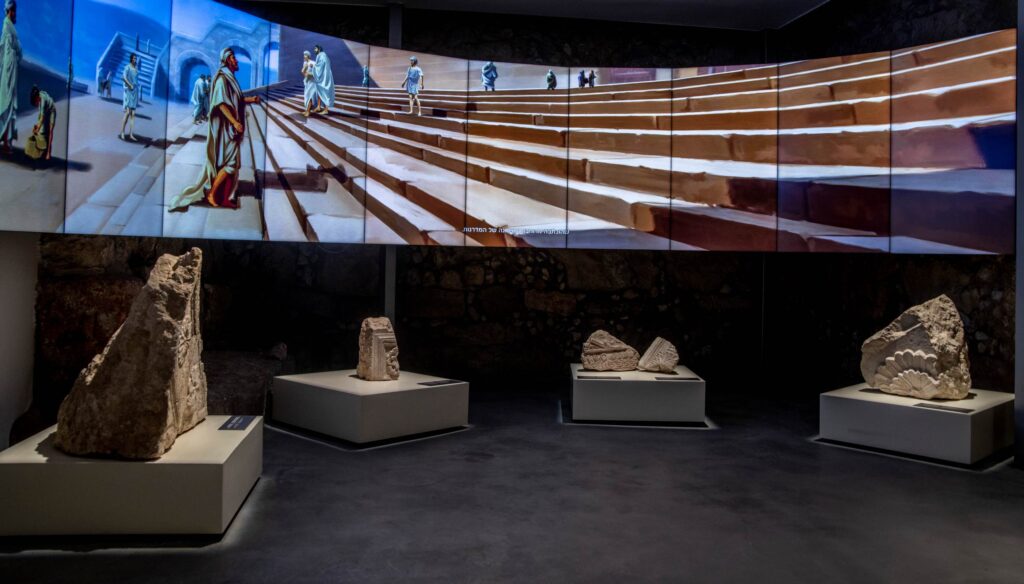
Artifacts from the Temple in Jerusalem displayed in the newly-renovated Davidson Center in Jerusalem, which will open to the public on March 13, 2023. (courtesy Emil Algam/IAA)
The Davidson Center first opened in 2001. The new wings of the building will have interactive galleries and augmented reality displays to help make life in ancient Jerusalem come alive. The Davidson Center is located in an Umayyad-period palace, built around the late 600s CE and used for administration, housing, and storage by the Umayyad dynasty.
In order to keep a low profile within the park, most of the Davidson Center is located underground in some of the ancient storerooms from the Umayyad period. The building is across from the southwestern corner of the Temple Mount, along what archaeologists believe was a main street for pilgrims who were ascending to the Temple courtyards via the Hulda Gates during festivals or other occasions.
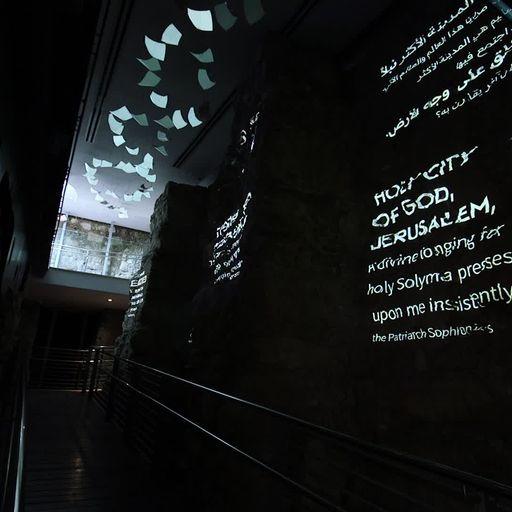
The newly-renovated Davidson Center in Jerusalem, which will open to the public on March 13, 2023, uses a combination of archaeological discoveries and technology. (courtesy Emil Algam/IAA)
The center was closed for three years for extensive renovations. McKeever said the crews worked throughout the pandemic closures, and that the lack of traffic in the Old City actually allowed them to speed up some of their work. The renovation also added new outdoor lighting in the Archaeological Park so the center will be able to stay open in the evenings. Prior to the closure, the Davidson Center hosted around 250,000 visitors per year.
Philanthropist William Davidson and his William Davidson Foundation, a Detroit-based family foundation that focuses on issues in southeast Michigan and Israel, established the Jerusalem Archaeological Park in 1995 and the Davidson Visitor’s Center in 2001. Experts from the Israel Antiquities Authority and the Company for the Reconstruction and Development of the right-wing Jewish Quarter in the Old City of Jerusalem Ltd (CRJQ) oversaw the curation of the new exhibits.
The exhibits at the entrance to Davidson Center will focus on the name “Jerusalem,” and include some of the earliest known inscriptions bearing Jerusalem’s ancient Hebrew name, “yršlm.”
“We want to make sure [the Davidson Center] contributes to Jerusalem and the understanding of Jerusalem and First and Second Temple periods,” said McKeever. “Technology sits along wonderfully with the archaeology, it’s a mix of old and new. Since the center first opened, technology has really changed and given us new opportunities to tell stories.”

